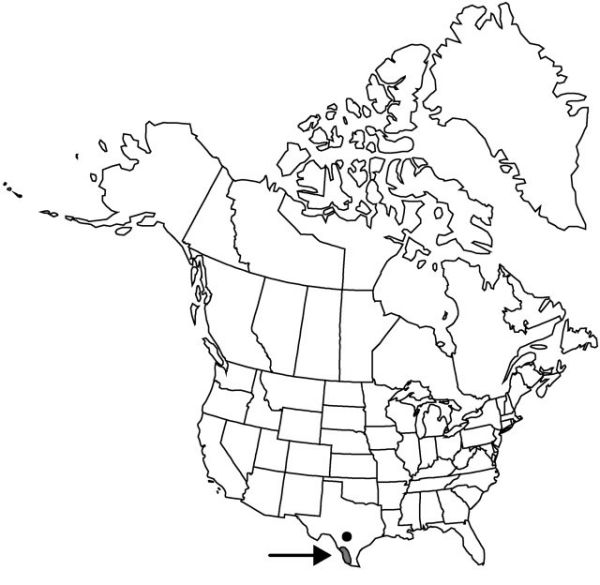Difference between revisions of "Agave asperrima var. asperrima"
FNA>Volume Importer |
FNA>Volume Importer |
||
| Line 1: | Line 1: | ||
{{Treatment/ID | {{Treatment/ID | ||
|accepted_name=Agave asperrima var. asperrima | |accepted_name=Agave asperrima var. asperrima | ||
| − | |accepted_authority= | + | |accepted_authority= |
|publications= | |publications= | ||
|common_names=Rough agave;maguey cenizo | |common_names=Rough agave;maguey cenizo | ||
| Line 8: | Line 8: | ||
|name=Agave caeciliana | |name=Agave caeciliana | ||
|authority=A. Berger | |authority=A. Berger | ||
| + | |rank=species | ||
}} | }} | ||
|hierarchy=Agavaceae;Agave;Agave asperrima;Agave asperrima var. asperrima | |hierarchy=Agavaceae;Agave;Agave asperrima;Agave asperrima var. asperrima | ||
| Line 23: | Line 24: | ||
|elevation=500–1500(–1900) m | |elevation=500–1500(–1900) m | ||
|distribution=Tex.;n Mexico. | |distribution=Tex.;n Mexico. | ||
| − | |discussion=<p>M. S. Cave (1964) reported chromosome counts of n = 74–93; H. S. Gentry (1982) stated that only one of Cave’s counts applied to < | + | |discussion=<p>M. S. Cave (1964) reported chromosome counts of n = 74–93; H. S. Gentry (1982) stated that only one of Cave’s counts applied to <i></i>var.<i> asperrima</i> and he gave it as n = 87.</p> |
|tables= | |tables= | ||
|references= | |references= | ||
| Line 32: | Line 33: | ||
-->{{#Taxon: | -->{{#Taxon: | ||
name=Agave asperrima var. asperrima | name=Agave asperrima var. asperrima | ||
| − | + | |authority= | |
| − | |authority= | ||
|rank=variety | |rank=variety | ||
|parent rank=species | |parent rank=species | ||
| Line 47: | Line 47: | ||
|publication year= | |publication year= | ||
|special status= | |special status= | ||
| − | |source xml=https://jpend@bitbucket.org/aafc-mbb/fna-data-curation.git/src/ | + | |source xml=https://jpend@bitbucket.org/aafc-mbb/fna-data-curation.git/src/f50eec43f223ca0e34566be0b046453a0960e173/coarse_grained_fna_xml/V26/V26_937.xml |
|genus=Agave | |genus=Agave | ||
|species=Agave asperrima | |species=Agave asperrima | ||
Revision as of 20:54, 16 December 2019
Plants acaulescent, frequently suckering; rosettes not cespitose, 7–10 × 15–20 dm. Leaves spreading to recurved and mostly reflexed, 60–110 × 12–18 cm; blade light green to grayish, without bud-prints, lanceolate, scabrous, rigid, adaxially plane and deeply guttered from mid blade to base, abaxially convex; margins straight, toothed, teeth single, usually deflexed along lower leaf edge, 8–15 mm, 1 cm apart; apical spine dark brown to blackish, subulate to acicular, 3–6 cm. Scape 4–7 m. Inflorescences paniculate, not bulbiferous; bracts persistent, triangular, 3–10 cm; lateral branches 8–14, slightly ascending, comprising distal 1/3 of inflorescence, longer than 10 cm. Flowers 14–18 per cluster, erect, 6–8 cm; perianth yellow, tube cylindric, 13–18 × 14–16 mm, limb lobes erect, subequal, 18–26 mm; stamens long-exserted; filaments inserted just above mid perianth tube, erect, yellow, 5–6.5 cm; anthers yellow, 24–30 mm; ovary 3–4 cm, neck constricted, 4–6 mm. Capsules short-pedicellate, oblong, 4–5 cm, apex beaked. Seeds 6–7 mm. 2n = 174.
Phenology: Flowering late spring–summer.
Habitat: Sandy to gravelly, often calcareous places in desert scrub
Elevation: 500–1500(–1900) m
Distribution

Tex., n Mexico.
Discussion
M. S. Cave (1964) reported chromosome counts of n = 74–93; H. S. Gentry (1982) stated that only one of Cave’s counts applied to var. asperrima and he gave it as n = 87.
Selected References
None.